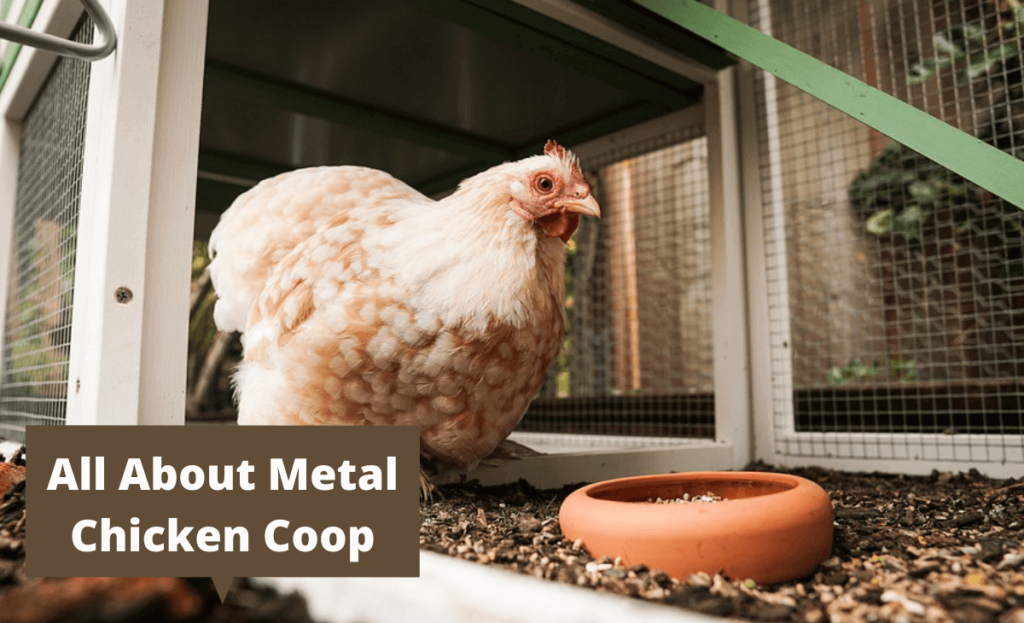How to make a metal chicken coop? But first, what is a chicken coop anyway?
Sometimes called a hen house or chicken run, a chicken coop is a small shed typically built in a backyard where chickens can live and lay eggs. It generally has an outdoor area enclosed by chicken wire where the chickens can roam and forage for food and a nesting area inside it where the chickens lay their eggs.
The article provides essential information before purchasing or making your metal chicken coops.
What to Consider When Buying a Large Metal Chicken Coop
There are essential factors to consider for coops. The following are listed below:
Size: Flock Capacity and Square feet
When deciding on the size of your chicken coop, you need to consider how many chickens you will be keeping and the square feet per chicken.
Most people overlook space restrictions and usually err at having too many birds for their needs and available area. Small poultry coops will leave your chickens cramped and stressed. Cannibalism, stress, pecking, and even death may result from undersupplying your flocks with space requirements.
In a large cage with more space, chickens will be able to move around freely and exercise, which is essential to their health and happiness.
Generally, each poultry needs about 2-3 square feet of space inside the chicken coop and 8-10 square feet of space in the pen.
So, if you’re planning on housing four chickens in your coops, you’ll need a minimum of 8-12 square feet of space inside the cell and 32-40 square feet of space in runs.
Number of levels
If you are short on ample outdoor space to accommodate the square footage of a large birdcage but want to have a decent size flock, consider a pen with multiple levels.
The two-level coops are the most common type and are a good option. Two floors provide the poultry with a convenient living space for a dust bath and resting area. The flock animals can take a dust bath in the sandpit on the first level and then climb on the ramp to the second level to lay their eggs in the nesting box. Often galvanized birdcage will house the nesting boxes on the upper level, so they’re quiet and away from the action.
Product Weight
You want to make sure that your chicken coop is sturdy but is light enough to carry so you won’t have any problems moving it.
The product’s weight varies as per the dimensions of the chicken coop. So, there is no general rule for the recommended weight to purchase.
However, make sure you get a birdcage weight of at least 50 pounds to ensure it is grounded. If you live in an area that experiences a lot of wind and has multiple flocks, you might want to go for a birdcage with weights greater than 100 pounds to keep it stable.
Chicken Run Inclusion
Chickens are oblivious to danger, so putting safety measures such as Chicken Run (also called chicken coop run) is very important.
A run is an enclosed area where your chickens can roam free during the day. And it also helps the flock animals be safe from predators.
The cage has to be high enough to keep your chickens inside and secure enough to keep any predators out. As mentioned earlier, make sure that each flock animal has 8-10 square feet of space to make them claw the sand with their feet to get worms, bugs, grubs, etc. The more flock claws or scratches, the more they are content and relaxed they will be.
Weather resistance
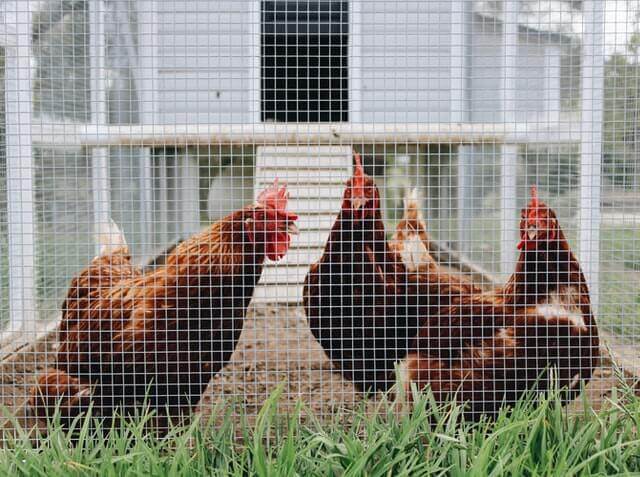
Weather resistance is essential when purchasing a chicken coop. Check whether the chicken coop is made with weather-resistant metals like aluminum, stainless steel, and galvanized metal. Ensure your galvanized chicken coop can withstand extreme weather conditions such as heavy rainfall and protect your chickens from debris.
Suppose you live in a rainy or snowy area. In that case, you may want to choose a birdcage with weather resistance to keep your chickens dry and comfortable in any climate.
Ease of assembly
The next factor to consider when purchasing the birdcage is find out how simple it is to assemble the cage. Ensure your chicken coop is easy to put together. Look for detailed, easy-to-follow instructions with pictures to fix your new chicken coup.
Some coops come with pre-installed flat panels, and all you have to do is attach them using a screwdriver and wrench. Check for the coup, which has pre-assembled panels. Also, ensure that all the necessary tools, such as wires, screws, discussions, etc., are included in the chicken coop kit before you commence building.
To save on hiring people, it’s also essential to check whether the metallic chicken coop is easy to assemble in less time with only two people.
Price
It will be best if you also consider the price. These birdcages cost in the range of between $100 and $300. Of course, the higher the capacity, the higher the price. However, pens with more features such as perches, nesting boxes, and ramps will also be pricier. Also, the larger the space, the higher the price. Therefore, it’s essential to find a coop for your flock that fits your chicken’s needs and budget.
When purchasing a birdcage, consider whether the birdcage comes with a warranty. Most coops come with a 60-day guarantee. A few companies offer pens with a five-year or lifetime warranty. But their price will be on the higher side.
Cover
It would help to consider whether the birdcage has waterproof and anti-UV protection before purchasing a new birdcage. A waterproof and anti-ultraviolet cover is a fabric that covers your birdcage to protect it from bad weather and the sun’s harmful rays. Most chicken coops come with a waterproof and anti-ultraviolet cover, but it’s always important to double-check before purchasing.
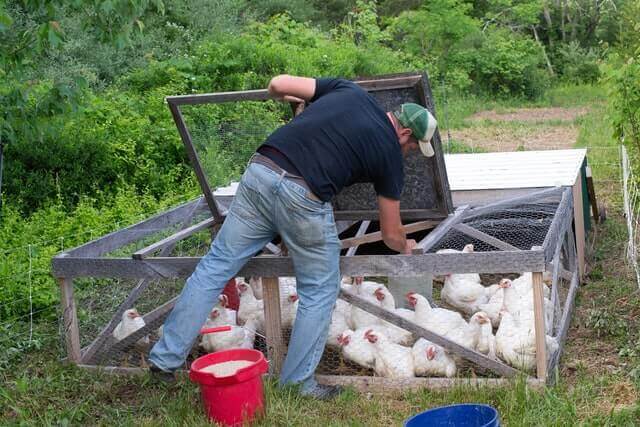
Materials Used: Whole Steel Galvanized Frame (Preferred)
When evaluating chicken cages for purchase, one of the most crucial factors is the materials used in poultry cage construction. Most coops will be made from galvanized steel or aluminum, both resistant materials that stand up to the disruption. The Galvanized steel material provides a cage with a rust-resistant finish which offers more extended life. These coops made from high-quality materials will last longer and provide your flock with a safe and comfortable place. However, it’s always important to check the specifications of the cage before making your purchase to be sure.
How to Turn Metal Shed into Chicken Coop
Follow these simple steps if you wish to convert your metal shed into a coop for your flock in the backyard. So let’s find out how to create a Metal Shed Coop idea.
Step #1. Location
The first step to setting up a birdcage is choosing the correct location. There are a few essential points to remember before choosing the site for your cage.
- The location of coops needs to be in an area that is level, well-drained and has good sun exposure.
- It must be close to a water source, as poultry need access to fresh water.
- Place the coops in an area with good ventilation.
- These coops need to be predator-proof. Predators such as raccoons, skunks, and foxes can quickly kill chickens, so the cage needs to be located in an area that these animals cannot access.
- A cage must not be placed where there are plants and flowers. As flock animals quickly destroy newly grown plants, vegetables, and flowers.
- These coops should not be too close to your house or other buildings on your property, as chickens can be noisy!
Step #2 Stabilize the Base
After choosing a safe and secure location for the birdcage, the next step is to stabilize the birdcage base. The primary purpose of preparing the command is to protect the bottom from the moist ground.
Firstly, use sand to level the bottom of the cage. Next, you have to calculate how much sand is required based on the area for the coup. Typically, 2.5 tons of sand is required for 8ft x 12ft with a depth of 6 inches.
Based on your location, you can use the above formula to calculate the amount of sand required. The main reasons to use sand are to make flock animals poop and bacteria dry; it has better drainage, is eco-friendly, and is inexpensive.
Then you can use concrete blocks at the corners and middle of the shed to level the ground of the cage. The concrete blocks will help keep the cell up off the ground, protecting the floor and base from deteriorating on the moist soil.
However, please ensure the coop’s base is without holes or cracks since predators may enter it.
Step #3. Set Up the Interior
After the base setup, you can start setting up the interior of your birdcage. It will include poultry roosts, nesting boxes, and perches.
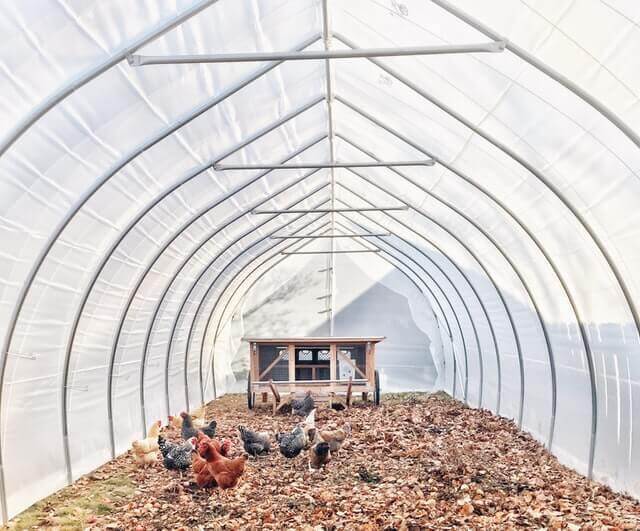
Create Roosting Bars
Birds like to perch in high places, so it is essential to have at least a few roosting bars inside your run. They sleep well, and roosting helps them avoid being captured by predators at night.
You may make an excellent roost with a 2×4 placed on its side, with the 4″ edge facing up. Roosting perches should be between 1.5 and 3 feet tall, depending on the size of your flock. Chicks don’t wrap their feet around a nest as wild birds do. They prefer to lie flat-footed when sleeping.
The roosting bars will be made of a smooth material like sturdy branches, wooden ladders, or boards. Make sure there is sufficient space between the “steps” (about 12-18 inches). So that the chickens’ feet do not get caught in them and the surface won’t be slippery.
Add Nesting Boxes
Nesting boxes are essential for two reasons:
- First, they give the poultry a place to lay their eggs;
- And second, they keep the eggs from getting broken.
The nesting boxes should be big enough for the flock to fit inside and covered with a soft material like straw or hay to make the birds feel comfortable. The general rule on nesting boxes is 16 inches long, 12 inches wide, and 14 inches high. A good nest is split into many individual nests, each fitting the available space.
One flock member needs about 4 square feet of space. However, the average birdcage is only 10-20 square feet, so you need to provide enough nesting boxes for all of your birds. The rule of thumb is one nesting box per four to six birds.
You must make sure that the birdcage is appealing to the hens to get them to lay eggs. You can do this by adding some soft bedding material to the bottom of the nest box. The bedding will make it more comfortable for the hen to lay eggs.
Place the nest boxes in a dark, quiet corner of the birdcage. They like to lay their eggs in a safe location.
Build Nesting Perches
A roosting perch is where your flock spends the night with their flock mates for socializing, especially in the winter months; also, it’s a place for a quick nap. They also watch what’s going on outside in the roosting perch.
The perch has to be kept around 1.5 to 3 feet high, depending upon the size and number of the flocks. The smaller birds, such as Bantams, can be placed higher. You can keep the perch 4 to 5 feet high for a few folks who put roasts high in coops.
Keep in mind that each bird requires between 8 to 10 inches of space on the porch. Perch will have recommended being kept higher than nest boxes, or flock will look for nest boxes instead.
Step #4. Constructing a Wall and Door with PVC Coated hexagonal wire
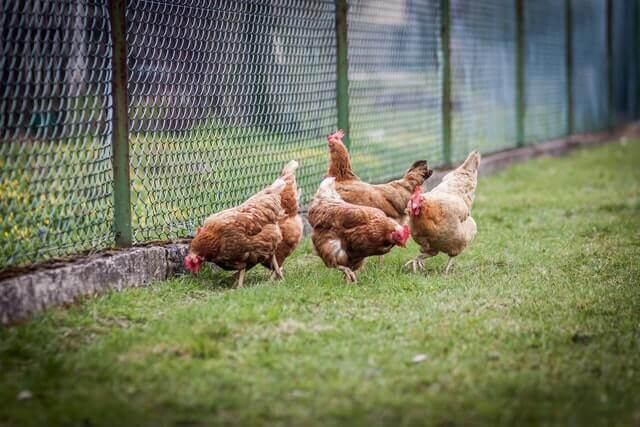
The most important aspect of the cage is that it is safe and easy to access. It means having a wall or door to keep predators out and making sure the pen is easy to get into it. An old doggie door is perfect for this, as it will allow you to quickly enter and exit the cage without having to climb over it. Ensure the door is big enough for your flock to walk through and has a latch to keep it closed at night.
When converting the door, construct a wall and doors with PVC-coated hexagonal wire mesh. You can do this by framing a wall with chicken wire and stapling it. The gate will have made out of the wire, or you can use a piece of plywood. Make sure the entrance is big enough for your chickens to walk through and that it has a latch to keep it closed.
There you have it! These are the simple steps for Metal Shed cage ideas.
How to Clean Your Metal Chicken Coops
By below simple steps, you can keep your coops clean and disinfectant for your poultry.
- Get all of the flock bedding out, as this can be a breeding ground for bacteria and parasites. Using a shovel, remove all the bedding and droppings from the birdcage. The square shovel will have recommended scrapping the base as old flock poops will have dried like cement.
- Once you remove all flock bedding, you’ll need to pressure washer the birdcage to remove any remaining droppings. Be sure to use a poultry-safe disinfectant in the power washer. It will help kill any bacteria or parasites that may be present.
- After the birdcage, wash with a high-pressure hose, sweep and scrap again for any remaining softened poop or dirt and allow the water to drain or clean it out of the door.
- Next, you have to disinfect the birdcage. Use a broom or brush to scrub everything with the vinegar solution as evenly as possible. After that, perform the final rinsing of the floor to drain all the water.
- Dry the cage floors by opening the chicken coop pop doors and windows using natural disinfectants, sunlight, and fresh air. Plenty of ventilation in the birdcage is beneficial.
- The next step is to scrub and clean the feeders and waterers. Then make them dry in the sun.
- Finally, add the birdcage accessories such as beddings, nesting boxes, and rooster bars, and welcome your lovely flock.
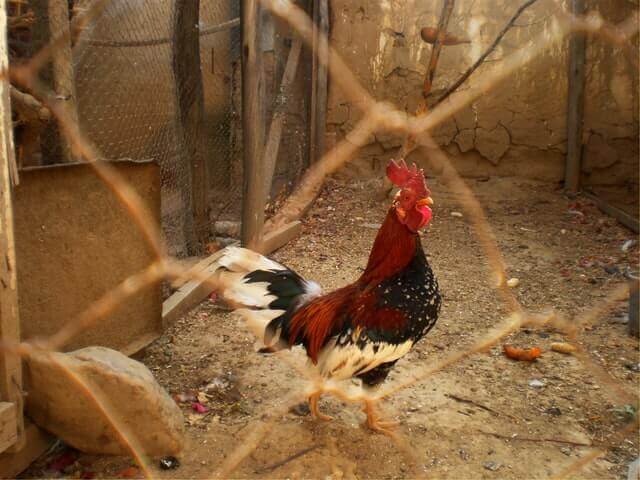
Advantages of Metal Coops
Metallic Chicken coops have several advantages over their wooden counterparts. These are the following:
Impervious to mites
Mites are tiny parasites that can infest birdcages and cause several health problems for poultry, including anemia, respiratory issues, and even death.
These chicken coops provide a less hospitable environment for mites than wooden ones. The latter is particularly vulnerable to mite infestations because wood provides a warm and moist environment that mites love.
Do not rot
One of the benefits of these birdcages is that they will not rot. Flock waste can create an environment conducive to rot and decay. It will not contaminate your soil and provide a healthy place for your flock to live. Its metal roof is vital, wind-resistant, and fire-resistant. It is four times the size of an asphalt roof.
The second characteristic of the pen roofs is that they are energy-efficient, benefiting the environment.
Higher resale value
These chicken coops are so durable that they have a higher resale value compared to wooden chicken coops. The wooden chicken coops will have borne wear and tear and have to throw it away.
So, if you’re looking for a pen that will hold its value, then a metal coop is the way to go.
Disadvantages of Chicken Coop
These runs can get very hot in the summertime, making it uncomfortable for your chickens. Place your cage in a shaded area if you live in an area where you can expect heatwave. Regardless of the weather, your pen will be made of wood, plastic, or metal; once placed in the shade, they should be the same temperature.
So, while these runs have many benefits, they also have a drawback that you should consider before purchasing.
FAQs About Metal Chicken Coops
Are you still unsure where to put your birdcage or how to heat it? Get the answers to many frequently asked questions about coops and suggestions on where you may find them.
In which location do you keep a flock cage?
Place your birdcage in the sun to encourage your flock to enjoy the light or hide in the shade. A solid, level foundation beneath your enclosure will keep predators from slipping through gaps. You’ll also want to choose a location with grass for them to peck at and a place where they can bathe in dust.
What is the best way to warm up the coop?
A coop can be warmed using heat lamps, flat-panel wall heaters, and infrared heaters positioned above it.
What are some tips for keeping rats out of the coop?
To keep rats away, dispose of any leftovers, store feed at night, and retrieve eggs daily. In addition, you should construct a birdcage of long-lasting wood with mesh wire, high-quality locks, and elevated nesting boxes. The best way to keep rats out of your coop is to snake-proof it.
Conclusion
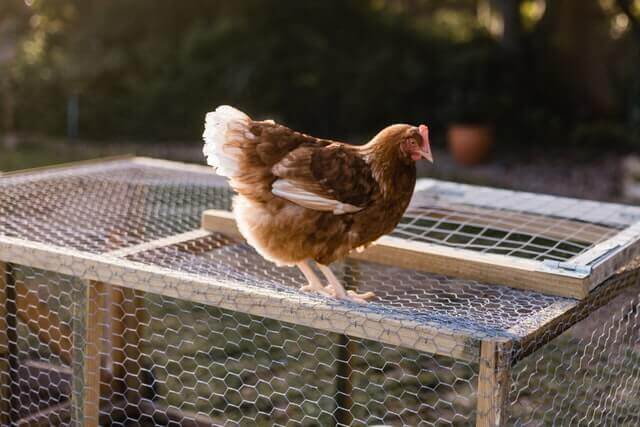
A metal coop is the best option if you are looking for a durable and long-lasting pen. These chicken coops provide several benefits that other coops do not. They will have made of high-quality materials that will not rot, have a higher resale value, and are much more resistant than other coops. However, the galvanized metal coop can get very hot in the summertime, so you should consider this before purchasing.

